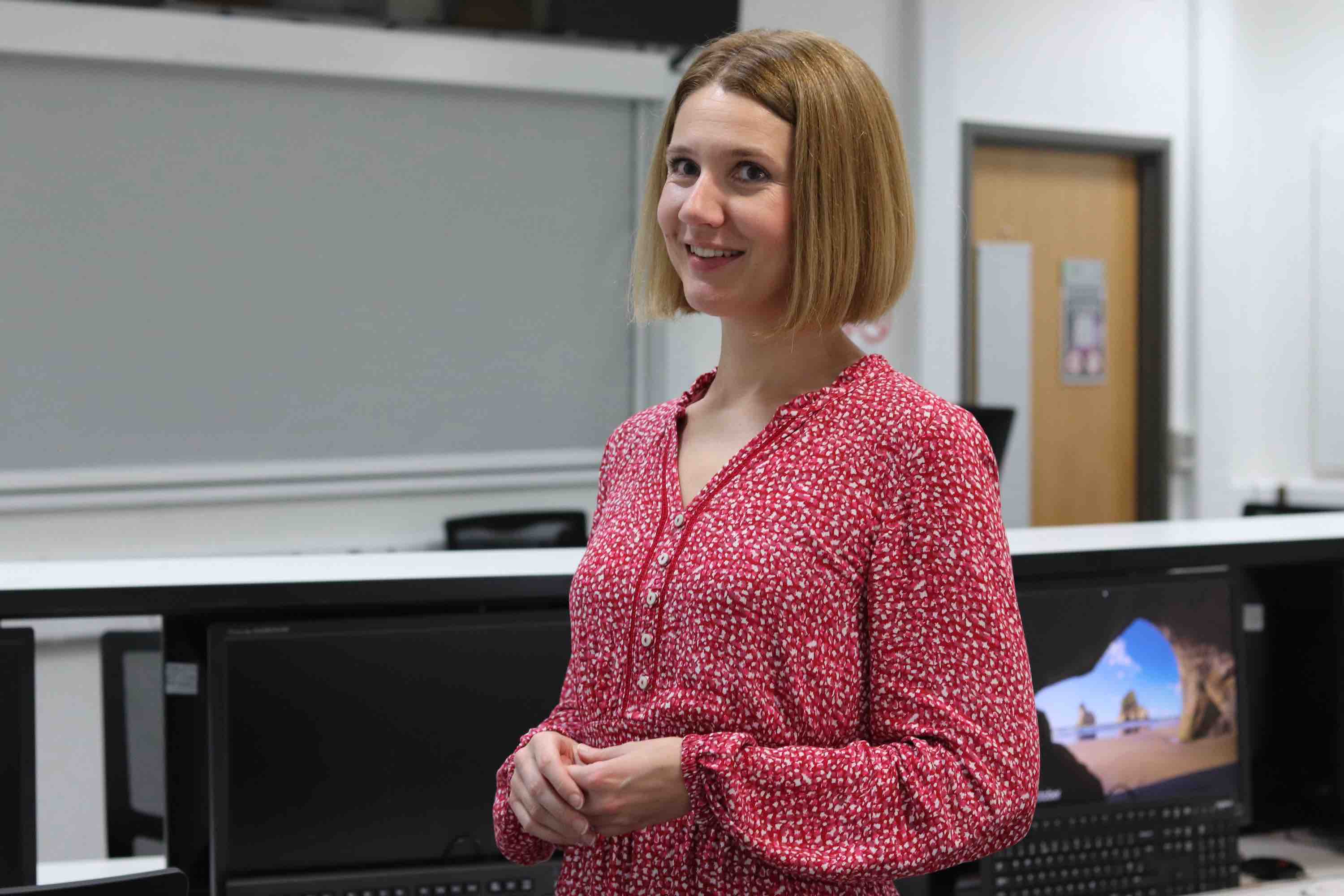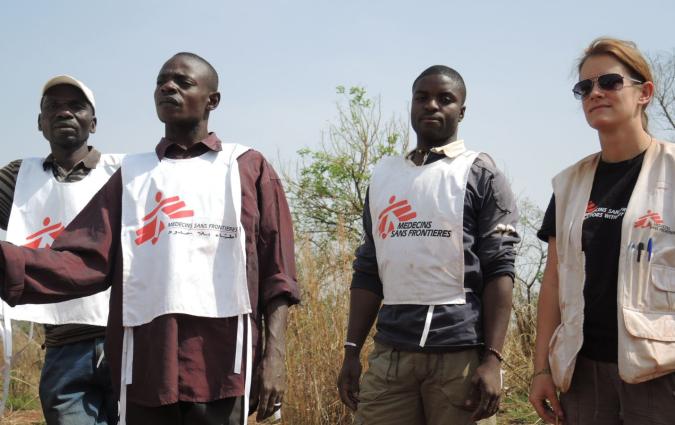A new book reveals journalists’ strategies for managing emotions and provides valuable tips

Maja Šimunjak.
As conversations within the media start to shift to appreciate the importance of addressing mental health issues and safeguarding reporters in difficult situations, some are also asking the question of how to address emotions in journalism. These could be workplace stress, sadness felt when reporting a tough story, or even excitement at a new opportunity. However commonplace these emotions are, if compounded they can lead to issues that can make journalists’ jobs harder, and in some cases even lead them to quit the profession.
A journalist and academic hoping to address this issue is Maja Šimunjak, a Senior Lecturer in Journalism at Middlesex University London and the author of Managing Emotions in Journalism, a newly published book based on interviews with more than 30 British journalists. The book raises awareness of emotional situations and stressors journalists may face and provides a framework for reporters to use in their work.
I spoke to Šimunjak, who worked as a journalist before joining the academia, about her book. We discussed what makes managing emotions important for journalists, and how they can practise emotional resilience in their work.
Q. We experience emotions in any job we do. What makes journalists different in terms of how emotions affect them and their ability to do their jobs?
A. Several things make journalists different. If you look at the rankings of the most stressful occupations, journalists are likely to feature there. And not only war correspondents whose lives are often threatened but also broadcasters and news reporters. Their jobs are perceived as stressful alongside those of police officers, firefighters and soldiers.
Unlike these other professions, what makes journalism different is that it's very public, so all of your triumphs, but also all of your mistakes are likely to be well known. That situation contributes to both enhanced positive and negative emotions. So, as a journalist, you might be more excited about covering a story because you think you might get public recognition for it. But you might also be more anxious about how a story pans out in public.
Another thing about this job is that it never stops thanks to social media. There's additional labour when you have to deal with audiences [on social media] in the post-production time. And on top of it, journalists I speak to often feel that they need to be constantly informed about what's going on and constantly available to cover a story.
Working under those circumstances can evoke feelings of anxiety, frustration, and nervousness. However, the industry seems to struggle with the fact that these working conditions are difficult and can be emotional. To me, it sometimes feels like we don't allow journalists to be human. We think they should be above everything, that they should just shrug it off, move on, and grow a thicker skin. That's the kind of narrative that is still quite common in many newsrooms.
Q. An important aspect of journalism is human contact. Journalists are always talking to people, including individuals who may have just had distressing experiences. How can this affect journalists’ own emotions?
A. Drawing on what I have learned from the journalists I spoke to and from my own work, I’d say you're bound to experience what we call vicarious emotions if you empathise with your interviewees. Journalists are likely to resort to what is called an attentional deployment strategy.
Q. What does this mean?
A. It means that you're focusing on the routine of the interview: asking open and neutral questions, actively listening, taking notes, and paying attention to potential sound bites. This practice can preoccupy the mind enough to enable behaviour to remain to a large extent unaffected by emotion. But there are boundaries to acting in a detached way. There is a story in the book about Metro journalist Sian Elvin crying in a car after a trauma interview.
She's not the only one who had this experience. Journalists I've interviewed suggested you have to show empathy, particularly in sensitive interviews. On the pragmatic side, they say that you are likely to get a better story if you're not acting like a robot. But if it's a particularly tough interview or story, you don't want to fall apart in front of an interviewee or in front of the camera. And even in those situations, journalists speak about employing the attentional deployment strategy.
Consciously focusing on the task allows you to suppress some of the heavier emotions until you're able to process them in what you would perceive to be an appropriate environment.
Q. Are there any examples of journalists who've struggled to manage their emotions in the job? What can happen as a result?
A. Of the 34 journalists that I interviewed for the book, three of them no longer work as journalists. That's nearly 10%. As far as I understand, they left journalism because of how they felt doing the job.
One left because they no longer wanted to experience online abuse; it made them feel constantly sad and anxious. Another one left because there were cuts in their company and they were put into a desk job, with fewer opportunities to go out and meet people; meeting people was what made them happy about being a journalist. The third one was so frustrated about having no time for their private life that they took a career break.
In each of these cases, it made sense to leave and that's the problem. They left because that was the only way for them to effectively manage their emotions. But this means that the profession is losing good journalists. More could have been done to support them, so they wouldn't see getting out as the only way to feel better.
Q. Many journalists feel like they’re being affected emotionally by their interactions on social media, but they also feel like they can't just leave the platforms. What can they do?
A. Even very senior journalists feel that they can’t leave social media, and there is this feeling of not having the agency to make that choice.
One of the things that journalists in this situation reported doing is to set boundaries that work for them. They will be different from person to person, depending on what is particularly triggering for them. Here are some of the things you can do.
You can make decisions on when you're accessing social media. You can make a boundary that you’re going to go to Twitter [now known as X] during your official work hours, but not in your private time. You can also consider what kind of information you want to share, thinking about your physical and online safety. You can consider whose content you want to read or watch.
One of the common boundaries that I have observed across the board is removing apps from phones. A lot of people said it just revolutionised the way they work, so they have to consciously log into Twitter on a browser and they are doing that for work, so there is an internal process of explaining to yourself why you're engaging with it. Turning off notifications and muting conversations are also boundaries you can set.
Distinguishing between personal and professional accounts [can be helpful]. I would also say that being aware of what is expected from you on social media can help, in terms of what the institutional expectations are and what kind of support there is if you're going to need it.
Finally, what some journalists said is that it's vital to talk about it. If you feel like you have to be there, and you're having a horrible time of it, just having a conversation with peers can release a lot of the pressure that you feel.
Q. In the book, you outline and apply a three-step method to cope with emotions in journalism. Can you explain how this works and why you chose it as the framework for the book?
A. It’s called ‘Stop, think, choose’ and it’s a model of emotional intelligence that I came across when I was trying to find solutions to the issues of work-related stress. By enhancing your emotional intelligence, which is a skill, you are better able to recognise, understand and manage your own emotions and the emotions of other people. Then you're able to more quickly bounce back when something happens because you're aware of what's happening, and you're actively managing it. In that sense, emotional intelligence increases resilience.
This model is a useful tool to increase emotional intelligence. First, you recognise the situation: that's the ‘stop’. Then you understand: that's the ‘think’. Then you manage: that's the ‘choose’.
If you are in an emotional situation, stop and try to recognise what you're feeling. Can you put a name to it? Sometimes it's quite evident. But we're not always aware of our emotions. Interestingly, in my interviews with journalists, I found they often couldn't name the emotion straight away. We had to talk about it for them to be able to consciously recognise what they were feeling. So that's the ‘stop’.
‘Think ’ is understanding why you feel what you're feeling because emotions are subjective and people in different situations might experience different emotions. And this can sometimes be tricky because our emotions are based on our interpretation of what's going on. They're not based on facts, they're based on what we think is happening.
This brings us to the final stage: to choose or manage those emotions. Only when you know what you're feeling and why you're feeling like that, can you make a conscious choice about what you can do in order to manage the situation to get the most positive outcome.
Even if you decide to do something which doesn't lead to a positive outcome, you will still feel better because you made a conscious choice about how you wanted to manage the situation, and you're going to learn from it. You may not do the same thing again, but it gives you agency over your choices.
Q. The book’s focus is on strategies individual journalists can implement. What are other aspects of managing emotions within journalism that you don't cover?
A. We need to be resilient. But we shouldn't be solely responsible for supporting ourselves while doing this job. There are two other pillars of support needed in every profession: support from organisations and from peers.
The first one is about the systems in place for people to get support when they need it. It can be an offer of training in particular practices, or regular briefings or debriefings with managers. One of the most important things is managers’ support. From the data that we have in the UK, supervisory support is one of the weakest links for journalists.
The final pillar is peer support. A lot of the strategy that I keep referring to in the book, the verbal processing, builds on being able to talk to your peers and reaching out if you see that something is happening, asking when you recognise that someone you know may not be feeling their best. That kind of peer support is important, and it has existed in journalism for a very long time.
It is very different from newsroom to newsroom, but it's that banter in the newsroom where you can just swivel on your chair and say, “I've just called 10 people and no one picked up!” That's an emotional release. And for somebody to then respond with something like, “I know, I've been trying to find sources for the story for the past week, it's so frustrating.” It's that sharing of frustration or anger or even happiness that is peer support in that context.
In every email we send you'll find original reporting, evidence-based insights, online seminars and readings curated from 100s of sources - all in 5 minutes.
- Twice a week
- More than 20,000 people receive it
- Unsubscribe any time







